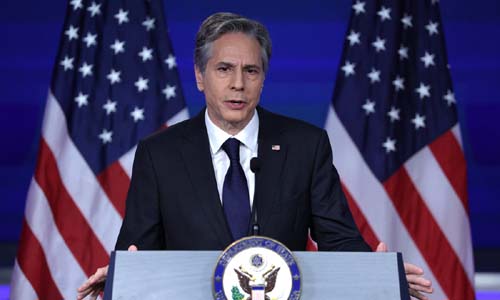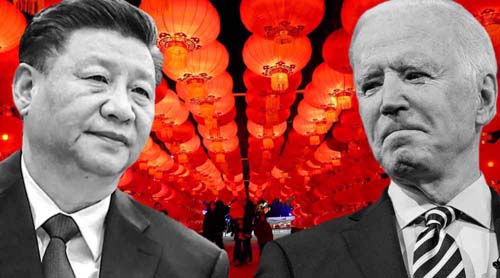
Hypocrisy and malevolence of US policy toward China
Wang Wen
US Secretary of State Antony Blinken delivered his much awaited policy speech toward China on May 26. The address has brought heated debates in China’s academic circles. Some scholars said the speech had positive aspects. For example, Blinken said the US is not “looking for conflict or a new Cold War” with China and showed respect to China’s “extraordinary influence.” But more scholars viewed the speech as a reflection of hypocrisy and malevolence of the Biden administration’s policy toward China.
The current US administration is good at making high-sounding remarks. It gives extremely high values to democracy, freedom and human rights. In its diplomatic activities, the Biden administration has appeared gentle. But Chinese people believe actions speak louder than words – beautiful rhetoric cannot conceal the ugliness in actions.
Some people mistakenly assumed that the ongoing Ukraine crisis would distract the US from China, but the conflict didn’t slow down the US’ comprehensive competition against China.

Blinken mentioned a new approach that they call “integrated deterrence,” showing that the US has never slowed its pace to comprehensively strategically contain China. According to a report released by the Chongyang Institute for Financial Studies at Renmin University of China in late May, since February through May 16, the US has engaged in 24 moves to suppress China in the spheres including economy, trade, finance, ideology, military science and technology, and geopolitics.
US’ strategic competition with China has gradually taken on an all-round and multi-level feature. Based on the continuous pressure on China in the fields of economy, trade and finance, more ideological factors have been incorporated in the name of “comprehensive deterrence,” but in reality, it is a great encirclement and suppression.
The pattern of US’ strategic competition with China since 2022 can be summarized as the following five points: stepping up the construction of an “Indo-Pacific economic and trade circle” that encircles China; pressuring Chinese companies financially; smearing China ideologically; provoking the Taiwan question with the means of “salami slicing”; and constantly suppressing China’s development in the field of military science and technology.
The most vicious of these tricks is on Taiwan, with Biden’s rhetoric in Japan stating that the US would help defend Taiwan, which aims at encouraging Taiwan’s independence and then provoking the mainland to attack the island. In this scenario, the US could use the same tactics it resorted in Ukraine to deal with Russia to the Chinese mainland. At that time, the Chinese people will kill each other, while the US will reap the benefits.
These tactics are pushing the image of the US to the bottom in the hearts of the Chinese people, whilst also reducing mutual strategic trust between China and the US to a low point.
In fact, Americans’ exaggerating the “China threat” theory indefinitely demonstrates a lack of self-confidence. Right now, there is simply no country that can threaten the US or dictate what the US says and does. US’ military spending accounts for 40 percent of the world total. The US dollar accounts for 60 percent of global reserves. The US is the world’s largest economy. China’s power is still far from that of the US.
If the US hopes to imagine an external threat and strengthen domestic unity by treating China as an enemy just as Hollywood movies do, then for a period of time in the future, the only factor that will affect China-US relations will be changes in China-US economic strength.
With the economic gap between China and the US gradually narrowing, China will gain an upper hand over the US in the competition. The stronger China is, the more stable China-US relations may be.
It’s impossible for China to succumb to the US. As the Biden administration still believes competition is the main axis of China-US relations, its basic thinking, strategy and tough stance toward China will remain unchanged in a short period of time. In this case, the probability of an all-round showdown between China and the US is increasing.
There are three possible scenarios for China-US competition in the future. First, there will be high-intensity competition in which the two countries will head for a full-scale military confrontation; second, a medium-intensity competition in which China and the US will see a comprehensive decoupling; third, a low-intensity competition where tense relations between the two become the new normal.
It now seems that we need to adapt to the new normal of tensions, stop the trend of decoupling whilst also preventing an all-out military confrontation. Otherwise, our generation will probably be scoffed at by history in the future.
The writer is professor and executive dean of Chongyang Institute for Financial Studies at Renmin University of China
